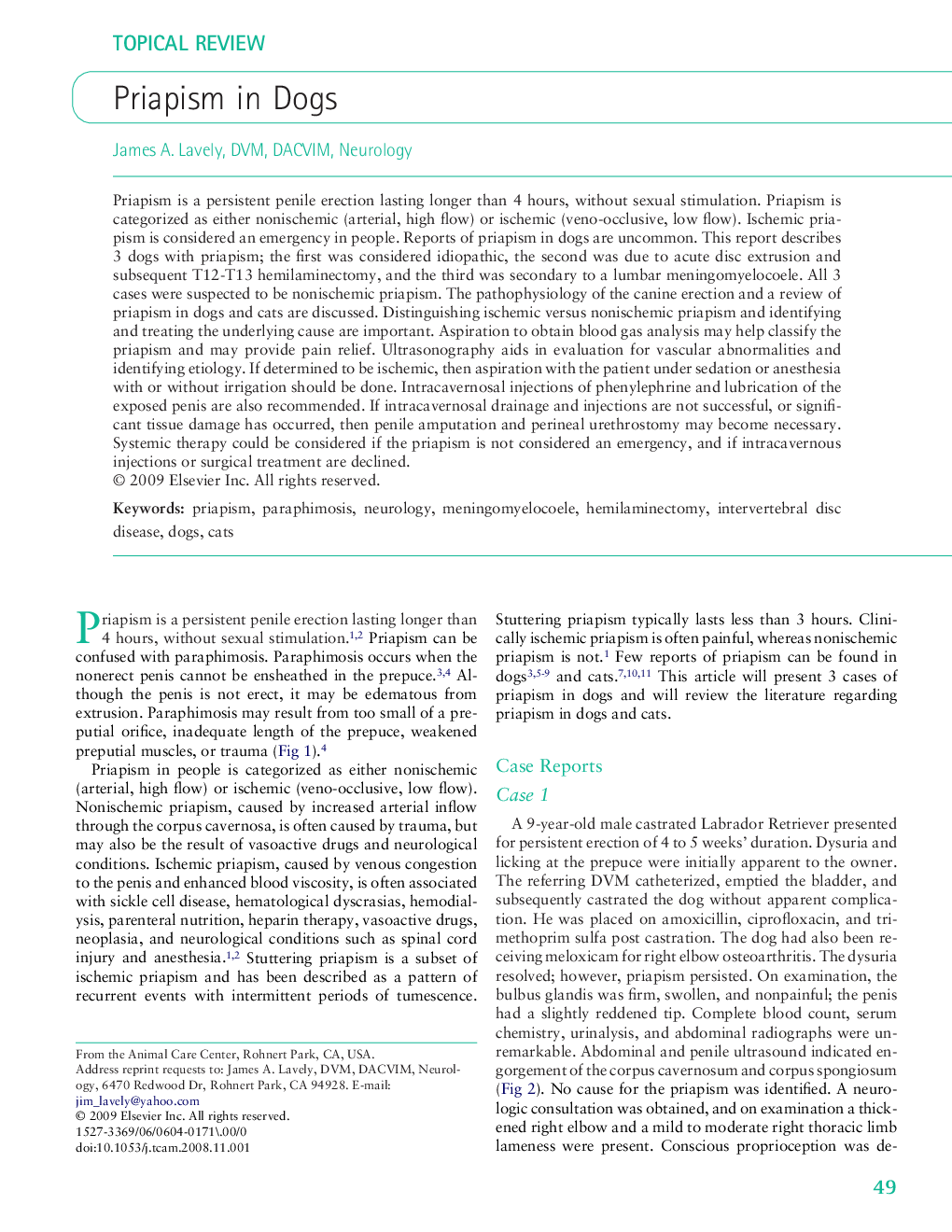| Article ID | Journal | Published Year | Pages | File Type |
|---|---|---|---|---|
| 2401326 | Topics in Companion Animal Medicine | 2009 | 6 Pages |
Priapism is a persistent penile erection lasting longer than 4 hours, without sexual stimulation. Priapism is categorized as either nonischemic (arterial, high flow) or ischemic (veno-occlusive, low flow). Ischemic priapism is considered an emergency in people. Reports of priapism in dogs are uncommon. This report describes 3 dogs with priapism; the first was considered idiopathic, the second was due to acute disc extrusion and subsequent T12-T13 hemilaminectomy, and the third was secondary to a lumbar meningomyelocoele. All 3 cases were suspected to be nonischemic priapism. The pathophysiology of the canine erection and a review of priapism in dogs and cats are discussed. Distinguishing ischemic versus nonischemic priapism and identifying and treating the underlying cause are important. Aspiration to obtain blood gas analysis may help classify the priapism and may provide pain relief. Ultrasonography aids in evaluation for vascular abnormalities and identifying etiology. If determined to be ischemic, then aspiration with the patient under sedation or anesthesia with or without irrigation should be done. Intracavernosal injections of phenylephrine and lubrication of the exposed penis are also recommended. If intracavernosal drainage and injections are not successful, or significant tissue damage has occurred, then penile amputation and perineal urethrostomy may become necessary. Systemic therapy could be considered if the priapism is not considered an emergency, and if intracavernous injections or surgical treatment are declined.
